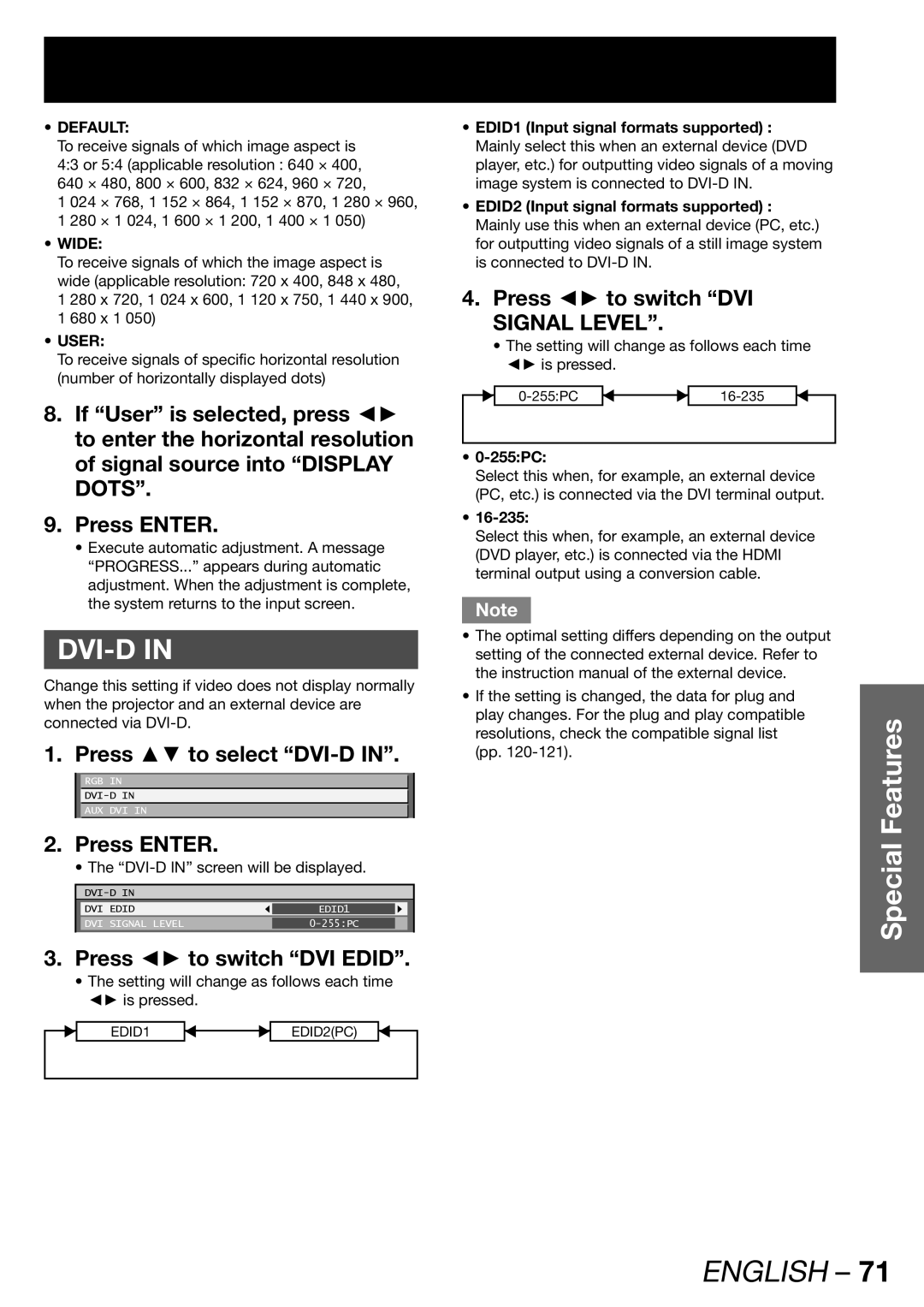
•DEFAULT:
To receive signals of which image aspect is 4:3 or 5:4 (applicable resolution : 640 × 400, 640 × 480, 800 × 600, 832 × 624, 960 × 720,
1 024 × 768, 1 152 × 864, 1 152 × 870, 1 280 × 960, 1 280 × 1 024, 1 600 × 1 200, 1 400 × 1 050)
•WIDE:
To receive signals of which the image aspect is wide (applicable resolution: 720 x 400, 848 x 480,
1 280 x 720, 1 024 x 600, 1 120 x 750, 1 440 x 900, 1 680 x 1 050)
•USER:
To receive signals of specific horizontal resolution (number of horizontally displayed dots)
8.If “User” is selected, press ◄► to enter the horizontal resolution of signal source into “DISPLAY DOTS”.
9.Press ENTER.
•Execute automatic adjustment. A message “PROGRESS...” appears during automatic adjustment. When the adjustment is complete, the system returns to the input screen.
DVI-D IN
Change this setting if video does not display normally when the projector and an external device are connected via
1. Press ▲▼ to select “DVI-D IN”.
RGB IN
AUX DVI IN
2.Press ENTER.
• The
DVI | EDID | EDID1 |
|
DVI | SIGNAL LEVEL |
| |
|
|
|
|
3.Press ◄► to switch “DVI EDID”.
•The setting will change as follows each time ◄► is pressed.
EDID1 | EDID2(PC) |
•EDID1 (Input signal formats supported) : Mainly select this when an external device (DVD player, etc.) for outputting video signals of a moving image system is connected to
•EDID2 (Input signal formats supported) : Mainly use this when an external device (PC, etc.) for outputting video signals of a still image system is connected to
4.Press ◄► to switch “DVI
SIGNAL LEVEL”.
•The setting will change as follows each time ◄► is pressed.
•0-255:PC:
Select this when, for example, an external device (PC, etc.) is connected via the DVI terminal output.
•16-235:
Select this when, for example, an external device (DVD player, etc.) is connected via the HDMI terminal output using a conversion cable.
Note
•The optimal setting differs depending on the output setting of the connected external device. Refer to the instruction manual of the external device.
•If the setting is changed, the data for plug and play changes. For the plug and play compatible resolutions, check the compatible signal list (pp.
Special Features
